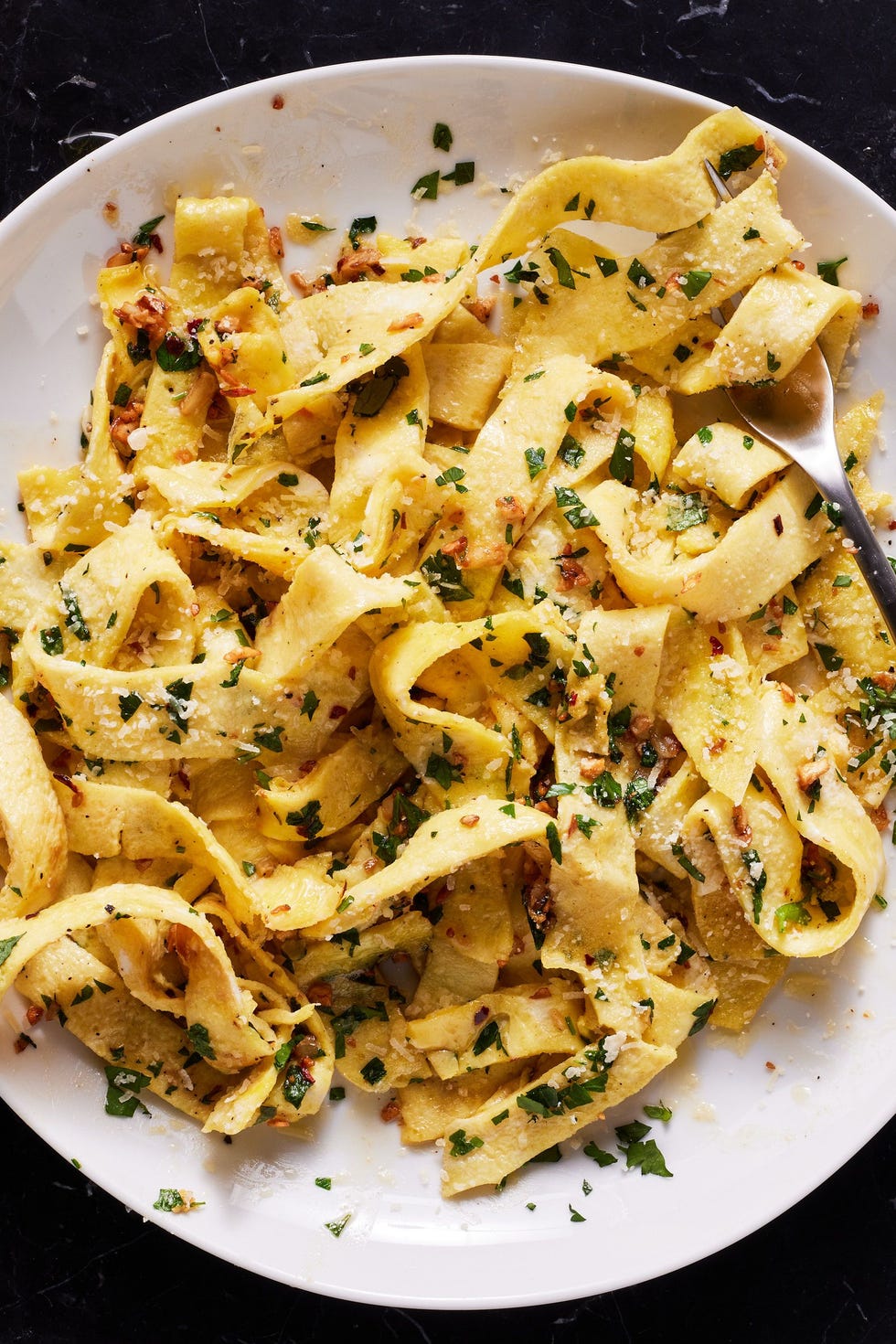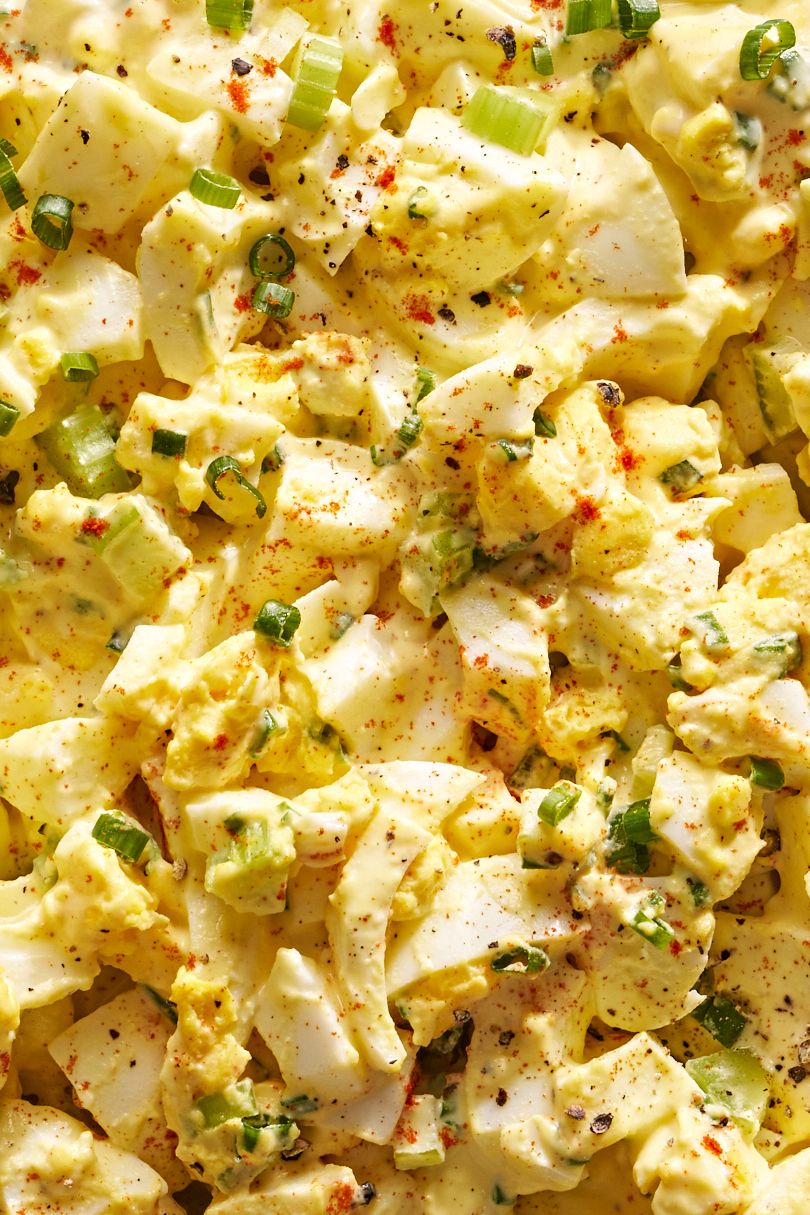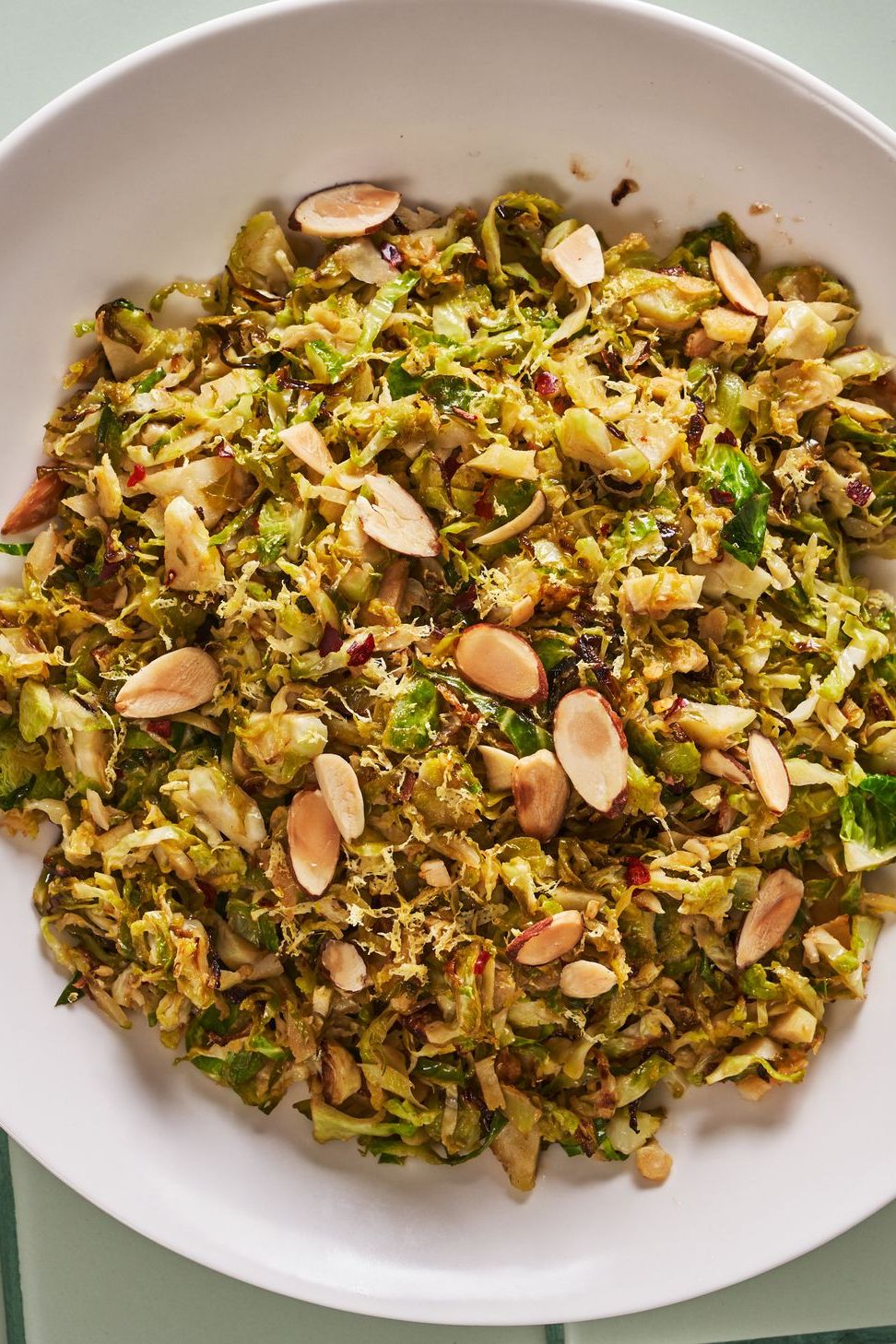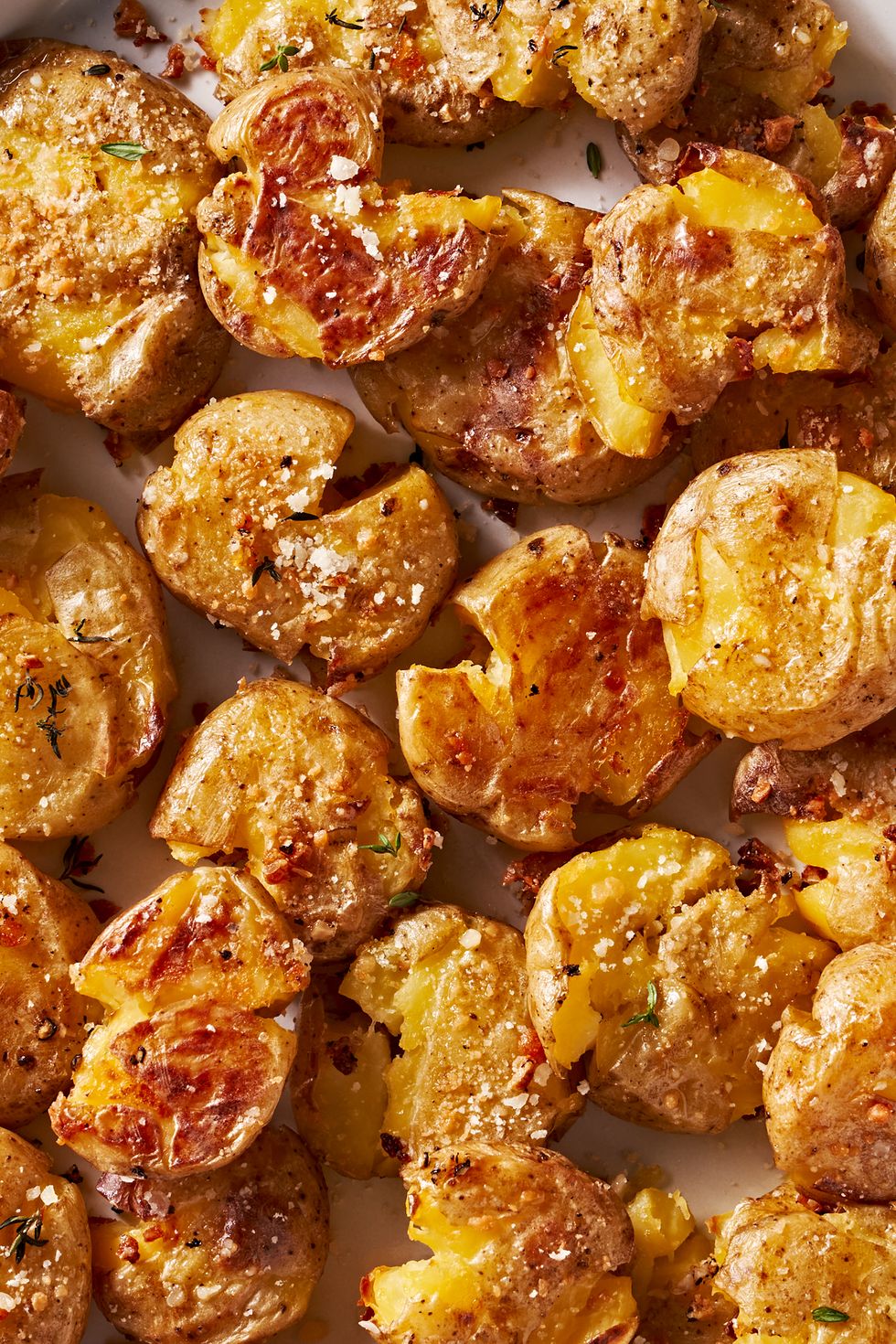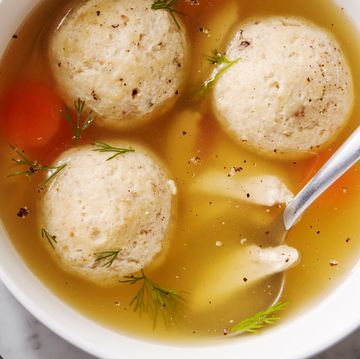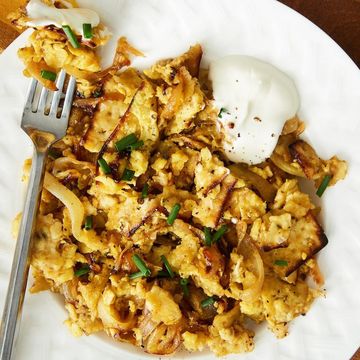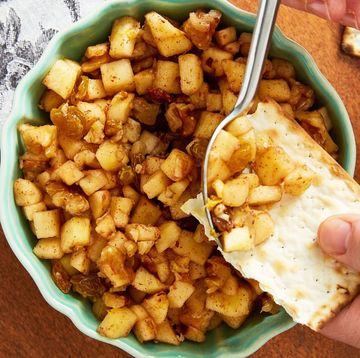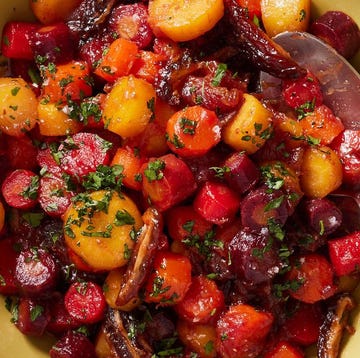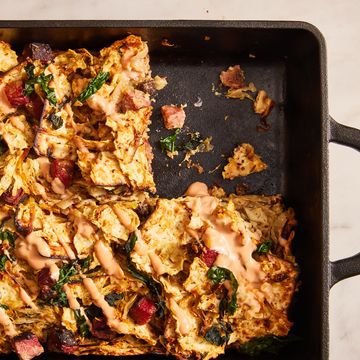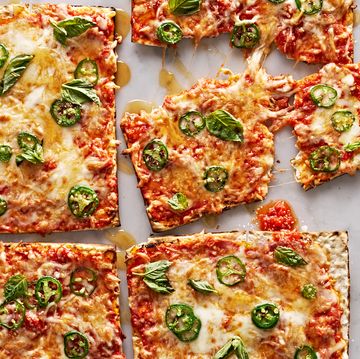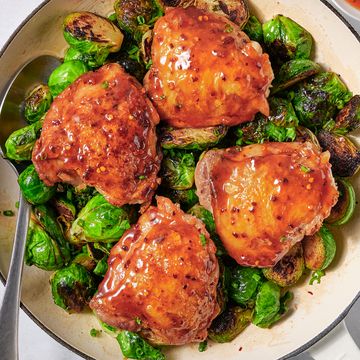37 Passover Side Dishes That'll Make Your Seder Dinner Your Best One Yet
No more matzo pizza for you!

With springtime in full bloom, its nearly time for the sacred holiday of Passover (April 22 to April 30, 2024), so we’re getting ready to ditch the chametz (or leaved bread products) and attend or host a Passover seder dinner (complete with a rousing chorus of Dayenu and finding the afikoman, ofc!). Though we’d never advocate to completely get rid of some of the more traditional foods eaten during Passover (potato kugel, we love you), those of us who celebrate know things can get a little… repetitive after a while. The best way to avoid that? Like with any holiday, switching up your side dishes can bring some much needed variety, color, and flavors to your meals. Check out our 33 Passover side dishes for ideas—we promise they’re better than eating matzo pizza again 😉.
The term “Passover” refers to the biblical stories of the 10 plagues sent by God to convince the Egyptian pharaoh to “let the Jewish people go” and the eventual exodus of the Jewish people from Egypt. The last of the 10 plagues was the killing of all firstborn Egyptian sons, during which God instructed the Jewish people to slaughter a lamb and mark their doorposts with its blood to instruct the Angel of Death to “pass over” them. After this last plague, the Pharaoh ordered the Jews to leave Egypt. As the story goes, they packed in such a hurry that they didn’t have enough time to even let their bread rise (if you’ve ever made homemade bread, you can imagine), and only were able to bring unleavened, cracker-like bread called matzo with them.
To celebrate this exodus, Jewish people today continue to remove chametz from their diets (and their homes, for some strict households) for the duration of Passover, as well as make sure all other ingredients they’re using are specified Kosher for Passover. Simply put, chametz is basically any leavened flour product like bread, cake, cookies, etc. Traditionally Jewish people also have avoided kitniyot, or legumes (like peanuts, peas, and beans), though recently modern families have begun reintroducing them into their Passover diets. In addition, they must continue to follow general Kosher rules (meat and dairy can’t be eaten in the same meal, though fish and eggs are considered neutral, or pareve; no pork products; etc.) Most families also traditionally make a seder plate full of items that help in the retelling of the Passover story before dinner.
There are some recipes that are practically synonymous with Passover: The aforementioned kugel is one, as is matzo ball soup, carrot-and-date-based tzimmes, and apple-walnut charoset. There are also some traditional Passover seder plate ingredients we’re highlighting here, like horseradish (maror), hard-boiled eggs (beitzah), or beets (zeroah, in lieu of a shank bone). If you’ve got extra of these ingredients and don’t want them to go to waste, try our egg salad, our horseradish mashed potatoes, or our beet borsht.
We’ve also included a number of salads, from lighter greens-based ones like our mandarin orange salad or our roasted beet & goat cheese salad, to hearty ones like our Niçoise salad or our roasted chickpea & avocado salad.
Speaking of chickpeas, they (and other legumes) fall under the category of kitniyot, a traditionally avoided ingredient throughout the history of Passover celebrations. Many modern families have begun reintroducing them into their kosher for Passover diets—if that’s not you, we’ll assume you’ll be aware of the regulations you abide by and will sub in or out of these recipes as needed. For everyone else, we hope these recipes will help broaden your perspective and inspire you to try something new. We think the best part about appreciating a culture you’re not a part of is the opportunity to try something new while also having the flexibility to (respectfully!) not be perfect about it.
Want even more Passover ideas? Check out our best recipes for Passover dinner and our favorite Passover desserts too (our matzo icebox cake is a stunner).
